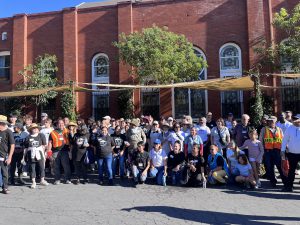Learn More
Jobs & Workers by Industry
Variable Definitions:
Residents Working in an Industry: The percentage of residents who live in an area that work in each of the industry sectors in the North American Industry Classification System (NAICS). (NOTE: this data reflects the industries employing the workers who live in an area. The jobs they work may or may not be located in the same area)
Jobs in an Industry: The percentage of jobs in each of the industry sectors in the North American Industry Classification System (NAICS). (NOTE: this data reflects the locations of jobs in an area. The workers employed in those jobs may or may not live in the same area)
The NAICS industry sectors are:
- Accommodation & Food Services
- Administrative & Support & Waste Management and Remediation Services
- Agriculture, Forestry, Fishing & Hunting
- Arts, Entertainment & Recreation
- Construction
- Educational Services
- Finance & Insurance
- Healthcare & Social Assistance
- Information
- Management of Companies & Enterprises
- Manufacturing
- Mining, Quarrying, & Oil & Gas Extraction
- Professional, Scientific & Technical Services
- Public Administration
- Real Estate & Rental & Leasing
- Retail Trade
- Transportation & Warehousing
- Utilities
- Wholesale Trade
- Other Services
Total Jobs: The total number of jobs in an area (NOTE: this data reflects the locations of jobs in an area. The workers employed in those jobs may or may not live in the same area)
Source:
Residents Working in an Industry: American Community Survey, 5-year estimates, Table S2404
Jobs in an Industry: Longitudinal Employer-Household Dynamics (LEHD) Origin-Destination Employment Statistics
Years Available*:
Residents Working in an Industry: 2011, 2012, 2013, 2014, 2015, 2016, 2017, 2018, 2019, 2020, 2021, 2022
Jobs in an Industry: 2011, 2012, 2013, 2014, 2015, 2016, 2017, 2018, 2019, 2020
*Note: Each year of available data shown above is a 5-year estimate, or an average of data collected over a five year period. 5-year estimates are used to increase the reliability of the data at small geographies like neighborhoods and census tracts. The years shown on the NDSC map represent the final year of the five year average (e.g. “2010” represents 2006-2010 data, “2011” represents 2007-2011 data, and so on). For the most impactful comparison of data over time, the ACS recommends comparing non-overlapping years (e.g. 2010-14 with 2015-19).
Why are these variables important to measure?
The percentage of residents in a neighborhood working in a particular sector has a variety of applications for different economic actors. For policymakers, these variables can show an economic and employment profile in a neighborhood, providing information about potential health and education resources that may be important to workers in some sectors more than others. Comparing these variables with the number of jobs in a particular industry provides information about which sectors are employing the most local residents in their area, which can affect issues related to childcare, transportation, and the environment.
Citation:
“American Community Survey and Puerto Rico Community Survey 2015 Subject Definitions.” United States Census Bureau: American Community Survey, 2015. Link
Related Data Stories

Economic & Financial Education for Students
The Value of Economics Many people view economics as the specialized domain of academics and professionals, but economics can be applied to a wide swath



